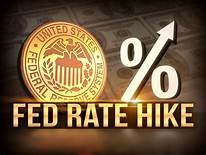The United States Federal Reserve is raising its key interest rate for the fourth time this year to reflect the US economy’s continued strength but signalling that it expects to slow hikes next year.
The quarter-point hike, to a range of 2.25 per cent to 2.5 per cent, lifts the Fed’s benchmark rate to its highest point since 2008. The increase will mean higher borrowing costs for many consumers and businesses.
The Fed’s policy statement says “some” further gradual rate increases are likely. But its updated forecast projects just two rate hikes next year, down from three that the Fed had predicted in September. In another sign of fewer rate hikes ahead, the new forecast reduces the long-run level for the Fed’s benchmark rate to 2.8 per cent, down from 3 per cent.
The Fed has raised rates with steady regularity as the US economy has strengthened. Wednesday’s was the Fed’s ninth hike since it began gradually tightening credit three years ago. But a mix of factors – a global slowdown, a US-China trade war, still-mild inflation, stomach-churning drops in stock prices – has led the Fed to consider slowing its rate hikes in 2019 to avoid weakening the economy too much.
It’s now likely to suit its rate policy to the latest economic data – to become more flexible or, in Fed parlance, “data-dependent.”
The Fed has so far managed to telegraph its actions weeks in advance to prepare the financial markets for any shift. But now, the risks of a surprise could rise.
Next year, Chairman Jerome Powell will begin holding a news conference after each of the Fed’s eight meetings each year, rather than only quarterly. This will allow him to explain any abrupt policy shifts. But it also raises the risk that the Fed will jolt financial markets by catching them off guard.
The reasoning for any shift in the Fed’s communications, some analysts say, is that it may want to pause in its credit tightening to assess how the economy fares in the coming months in light of the headwinds it faces.
Contributing to this view was a speech Powell gave last month in which he suggested that rates appear to be just below the level the Fed calls “neutral,” where they’re thought to neither stimulate growth nor impede it. Powell’s comment suggested that the Fed might be poised to slow or halt its rate hikes to avoid weakening the economy.




Leave A Comment